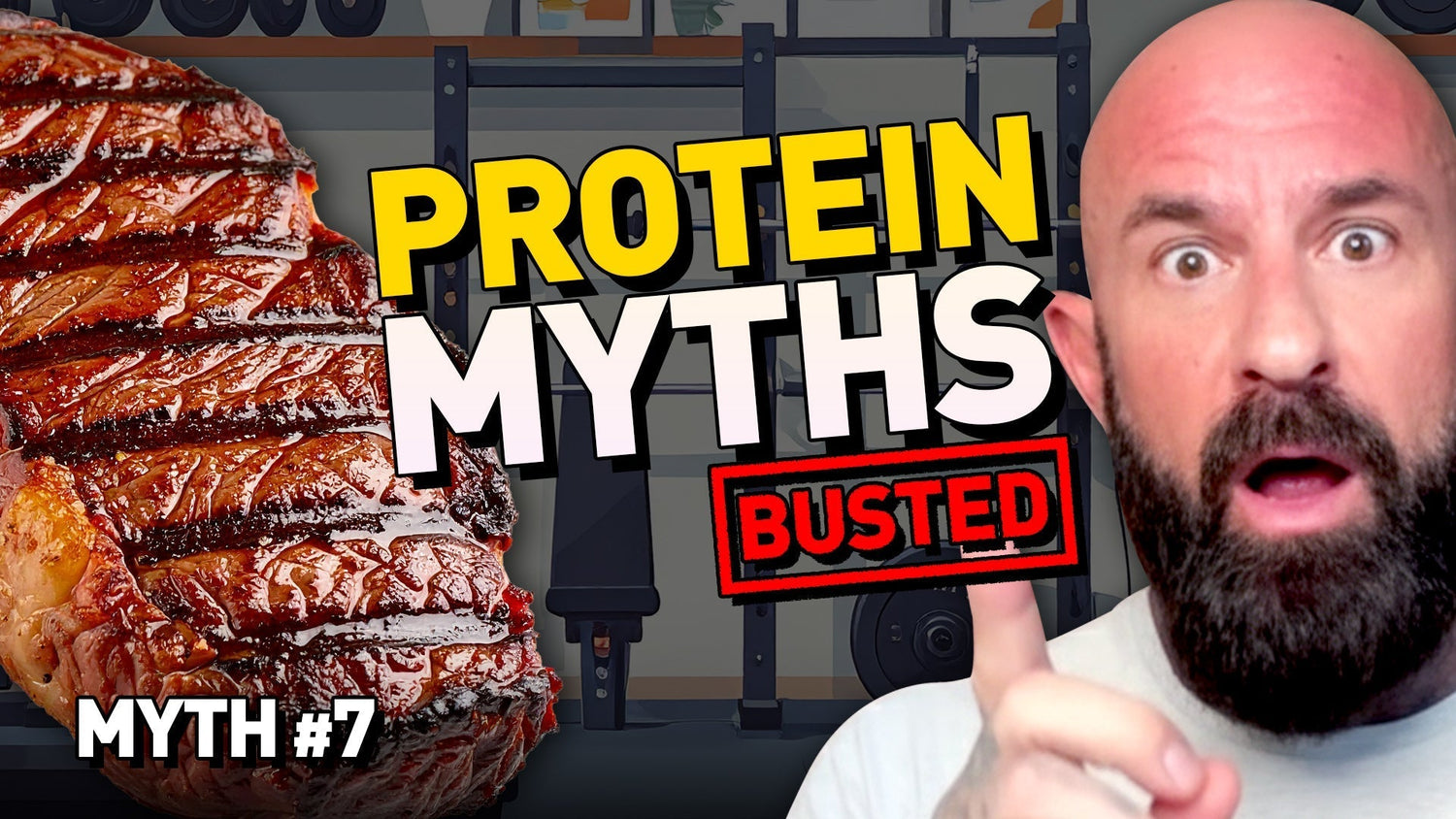Are These Myths about Protein Getting Between You and Your Goals?
Myth: "You have to eat protein every two hours or you'll lose your gains!"
Reality: Protein timing can help, but it isn't always necessary.
Regularly scheduled intake of moderate amounts of protein (around 30-40 g per meal) can maintain more consistent muscle protein synthesis (MPS) over the day.1 Practically, eating every ~3 hours helps most people hit the leucine threshold (~3 g leucine) needed to fully trigger MPS with typical whole-food or dairy/meat/fish protein servings.
Myth: "The body can only absorb 30 grams of protein in a sitting!"
Reality: ~30 g is a solid target — but not a hard ceiling.
Where the "20–30 g" idea came from
The popular "cap" stems from short-window studies — e.g., whey trials that measured MPS over only ~3 hours post-exercise and saw 20–30 g maximize MPS within that window.2 Those designs don't tell us what happens beyond 3 hours.
The leucine mismatch at 20 g
A typical 20 g whey serving yields roughly ~2 g leucine, which undershoots the ~3 g leucine threshold linked to maximal MPS. For most people, 30–40 g of a high-quality protein source is a better per-meal range to reliably hit that leucine trigger.2
Newer evidence: larger meals still "count"
A 2023 trial compared 25 g vs 100 g of protein after whole-body training and found the 100 g meal produced a greater, more prolonged anabolic response over 12 hours — indicating the extra protein wasn't "wasted."3
How Much Protein Do You Really Need Per Day?
For most active people, aim for 0.7–0.9 g per pound of body weight per day (≈1.6–2.0 g/kg). For an easy rule, many use ~1 g/lb daily.4
Does Meal Distribution Matter?
Total daily protein is the #1 driver of results, but distribution helps. In a controlled design, splitting 80 g of whey into four 20-gram servings every 3 hours outperformed skewed patterns for 12-hour MPS.1
Reviews also associate more even daily distribution (~25–35 g across 3–5 meals) with greater lean mass over time versus highly skewed intakes.5
Myth: "You must eat within 90 minutes or you miss the anabolic window."
Reality: The window is broader than you think.
If you ate pre-workout, muscles remain responsive for many hours. In beginners, MPS can stay elevated up to ~72 hours, whereas trained lifters see a shorter window (≈16 hours). Still, protein and carbs soon after training aid recovery and glycogen repletion.6
Other Common Myths — Quickly Debunked
"Protein isn't used for energy."
When glucose or muscle carb levels are low, amino acids can be oxidized for fuel and support performance; protein does more than just trigger MPS.
"Cut protein to lose fat."
Higher-protein diets increase satiety, help preserve muscle, and raise diet-induced thermogenesis. In one trial, a very high protein intake led to ~5 lb more fat loss in 8 weeks despite ~500 extra daily calories versus a lower-protein group.7
"Dairy proteins make you fat."
Dairy (whey/casein) is highly anabolic, and higher dairy intake is often linked with leaner body composition in active populations.8
"Protein powders are worse than whole foods."
Powders are simply convenient forms of the same dietary proteins, often superior for pre-/post-workout because they digest quickly and help you hit macronutrient targets consistently.
"High-protein diets harm healthy kidneys."
In people without kidney disease, higher protein intakes have not been shown to impair renal function.9
Watch the Full Breakdown
Bottom Line
There's no strict per-meal protein cap. Hit your daily total (e.g., ~1 g/lb) and aim to spread protein evenly across meals to maximize muscle growth and recovery.
"Focus on the daily total, and distribute it sensibly — the body can utilize much more than 30 g in a single meal, especially over longer post-meal windows."



